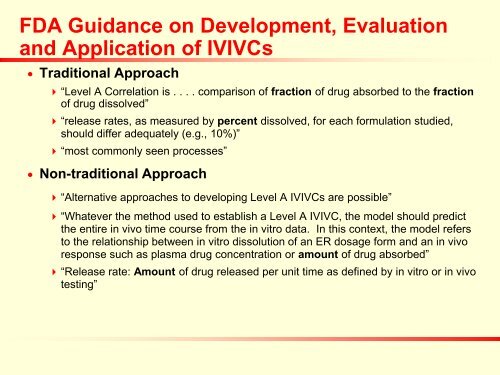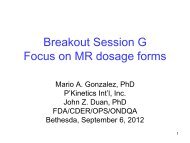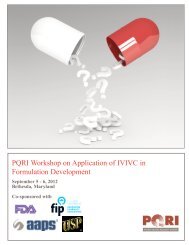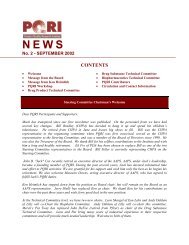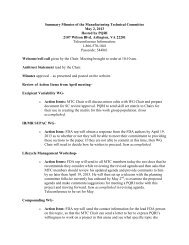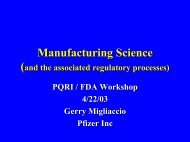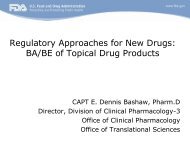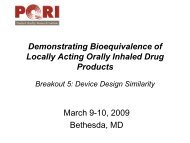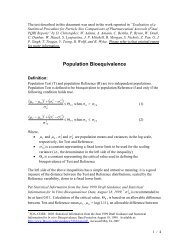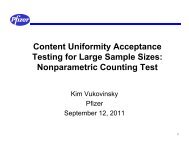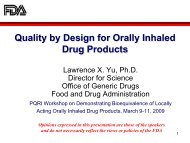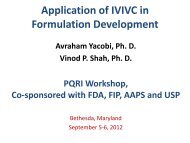Applications of IVIVC in Formulation Development - PQRI
Applications of IVIVC in Formulation Development - PQRI
Applications of IVIVC in Formulation Development - PQRI
You also want an ePaper? Increase the reach of your titles
YUMPU automatically turns print PDFs into web optimized ePapers that Google loves.
FDA Guidance on <strong>Development</strong>, Evaluation<br />
and Application <strong>of</strong> <strong>IVIVC</strong>s<br />
<br />
Traditional Approach<br />
“Level A Correlation is . . . . comparison <strong>of</strong> fraction <strong>of</strong> drug absorbed to the fraction<br />
<strong>of</strong> drug dissolved”<br />
“release rates, as measured by percent dissolved, for each formulation studied,<br />
should differ adequately (e.g., 10%)”<br />
“most commonly seen processes”<br />
<br />
Non-traditional Approach<br />
“Alternative approaches to develop<strong>in</strong>g Level A <strong>IVIVC</strong>s are possible”<br />
“Whatever the method used to establish a Level A <strong>IVIVC</strong>, the model should predict<br />
the entire <strong>in</strong> vivo time course from the <strong>in</strong> vitro data. In this context, the model refers<br />
to the relationship between <strong>in</strong> vitro dissolution <strong>of</strong> an ER dosage form and an <strong>in</strong> vivo<br />
response such as plasma drug concentration or amount <strong>of</strong> drug absorbed”<br />
“Release rate: Amount <strong>of</strong> drug released per unit time as def<strong>in</strong>ed by <strong>in</strong> vitro or <strong>in</strong> vivo<br />
test<strong>in</strong>g”


